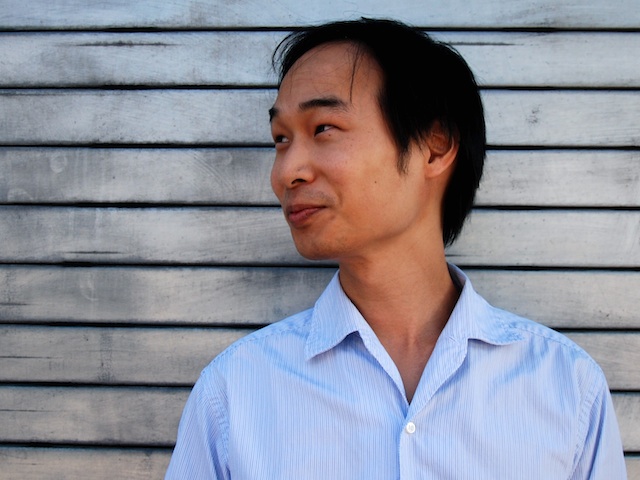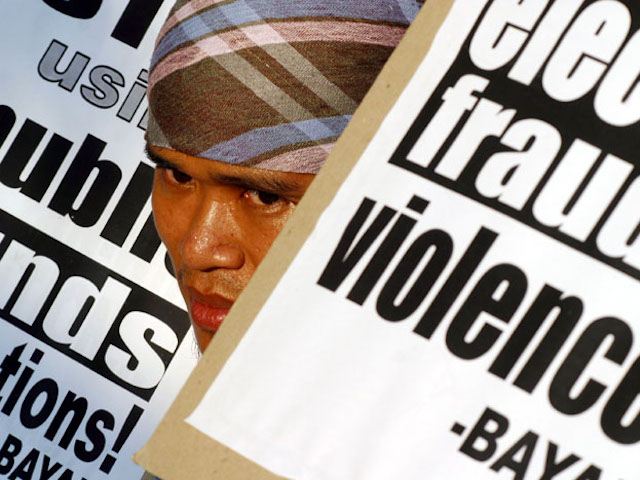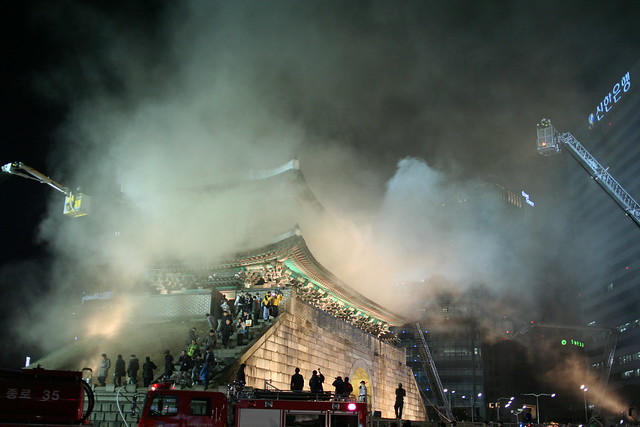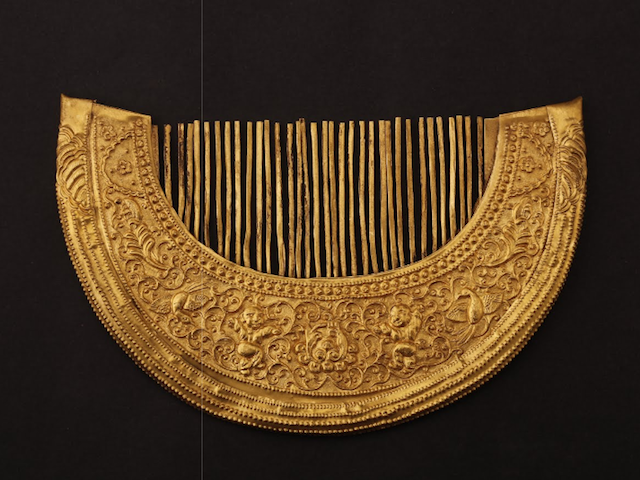An interview with poet Tung-Hui Hu

December 6, 2013
Tung-Hui Hu, who goes by Hui-Hui, is a cool cat of many disciplines. He is the author of three collections of poetry, the recipient of many fellowships and residencies, and now teaches media studies in the English department of the University of Michigan. I’ve had the pleasure of studying with him at the Kundiman Retreat for Asian American poets in the summer of 2012, and also the pleasure of recording this conversation earlier this year in his new corner office in Ann Arbor, MI. (He’s currently a visiting scholar at Stanford University this academic year.) From our third-story vantage, I could see behind him the metallic steel museum of art, behind which was an ivy-draped fine arts library, and behind which were the gothic stone spires of the law quad. We discussed his new book Greenhouses, Lighthouses (Copper Canyon Press, 2013), what it means to connect, the palinode as an alternate history, and the eponymous Hui-Hui cocktail.
*
Henry W. Leung: Your writing has taken you many places—I’ve even run into you randomly around the world—and since geography and the emotional content of re-centering feature in your poems, can you talk about place and movement and whether there’s a particular home you claim?
Tung-Hui Hu: That’s a really good question because I’ve always wanted to be a poet of place. I always wanted to be like those writers I met in Mississippi influenced by the legacy of Faulkner, or the Nevadans I met who wrote beautifully about the Nevada test site. And I’ve always been keenly aware of the fact that when I was growing up, we moved every two years or so. You know the train from D.C. to Boston? Although we stayed in Maryland for a while, I feel like I’ve lived everywhere along that train line.
I remember reading these biscuit recipes from the 19th century. There’s something called Maryland beaten biscuits, where you’re supposed to pretend that the batter is the sister who ran off with your husband, and you punch it as if you were punching her. And I memorized this recipe because I wanted to be from Maryland, retroactively, though at the time I thought of Maryland as a banal state, filled with people coming and going. So I guess I would say that I’ve never felt like part of a real place, but I’ve been keenly interested—perhaps because of this placelessness—in questions of cultural landscape and cultural geography.
You’ve studied and worked in many disciplines: architecture, computer science, you teach film and media studies in an English department… Was there a sequence that led you to poetry? How do all these ways of seeing come together in your work and your life?
It actually started as a way of escaping the world of poetry. I dropped out of grad school in creative writing and tried to be a capitalist for several years. I had a lot of fun doing that. After a while, I was told to go finish my degree, and I did, but I don’t think my heart was in poetry then. My heart was into finding something new, and architecture had very glamorous magazines and people wearing cool glasses, so I thought: this should be for me. So I spent the second year in my MFA program taking architecture classes. I feel like poetry’s such an old part of my life that I struggle against it and leave and can’t quite leave and go back to it. I was actually on the rocks with poetry until I got to Kundiman and Truong [Tran] said, “Yeah, I haven’t written a damn word in years.” And I’m like, Oh! It’s okay to have this very bad relationship with poetry! So, initially what was architecture and an interest in space and social practices, in looking at the parking lots and street signs to figure out how people actually lived, that time spent looking at things morphed into visual culture. I became interested in artworks and films. My fourth or fifth department was film studies.
It’s only very recently, probably in the last two years, that I’ve felt film studies and poetry have anything to do with each other. I tried very hard to keep them separate. In part, being a poet has certain connotations about who you are as a person. I gave a party and overheard one guest say to another, “This guy Hui-Hui, he’s actually friendly! I expected him to be a lot moodier.” And academia is a different thing; people don’t take you very seriously if you talk about yourself as a creative writer. Only recently have I started thinking about ways that I can use poetry to talk about avant-garde art, and ways to use films to talk about poetry. In a recent lyric essay class, we did watch some films, and we looked at people like Bhanu Kapil and Heather Weston, people who work between visual and literary registers.
There’s so much emphasis nowadays on being interdisciplinary. For me, it’s much more important to be multi-disciplinary. I mean, we’re really bad about this in literary criticism: we’ll use art history, and we’ll throw this 18th-century painting up and say, “Look at this—this image clearly illustrates the meaning of this novel.” I think art and literature are really autonomous, and I think the best books respect that autonomy.
There’s a sense of that in Greenhouses, Lighthouses, both this troubled relationship with poetry and also this multi-disciplinary approach. You start with an ars poetica, but most of the book is a set of palinodes, written as conversations with other mediums (films, paintings). And you have that epigraph from Stesichorus’s “Palinode,” which is him recanting what he’d written about Helen launching the Trojan War because he believed the gods had taken his eyesight as punishment. Do you feel like your book is a recanting?
There are a lot of ways to answer that question. The easiest way is: starting the book, I had the idea that I would write poems to apologize for everything I had done wrong, even if I hadn’t yet done them. I’m really sorry for that horrible line break where I broke on the word “the,” I’m really sorry for killing your mother, I haven’t done that yet but I’m sorry about that anyway, I’m sorry that I insulted you. It seemed like a really fun and rich form to explore.
The second answer is that [Stesichorus’s] story is really odd. Those first three lines are, “This is not true. You did not sail in the broad-benched ships; you did not go to Troy.” How do you take back something which is so obvious and true? How do you say, “Oh no, you never went at all?” The way he does it is he invents a fictitious copy of Helen made out of clouds. The person we thought was Helen was actually a fake image of Helen. It sounds so far-fetched; how could we be deceived by this flimsy excuse? And yet we’ve gone to war for very similar reasons. We went to war over a fake image of weapons of mass destruction. So there’s something about the power of images there, and the power of the palinode.
As you point out, a palinode means to recant something, “to sing back.” When I was writing in San Francisco, there was this impossible temporality going on with the gay marriage debate. You had this weird situation where you could get married, but then that was voided, but then people were trying to figure out what it meant for their marriages. Some of my friends called it queer temporality. They were trying to retroactively marry each other, or unmarry—it was very confusing—or they’d marry for the second time because they thought the first one might not have worked!
In the different context of 9/11, I thought about what it might mean to use the palinode for good, as a response to what we had experienced as a country. What would it mean to take back or recant events which obviously happened, but, in a phantasmatic way, might be undone? Can poetry, can the power of images offer an alternate form of history to work through these unresolved traumas? So that’s the theoretical goal that I had.
I want to talk about “Invisible Green” and time, its concept of light which may or may not communicate, these dotted lines on the maps, these passages of birds unheard through the fog. Can you talk about these themes of trying to communicate, trying to reach outward? “This is the part of the book where touching is encouraged…”
You know, “Invisible Green” came last in the book. I thought it would be incredibly cheesy to put a poem about lighthouses in a book called Greenhouses, Lighthouses. I was thinking about the themes of the book when I wrote it, assuming it would be part of a separate project. I had asked all these questions of collectivity and how we understand ourselves as part of a larger multitude. There’s a union slogan, “An injury to one is an injury to all,” that I used to title one of the palinodes. The poems investigate how we’re connected to other people. Of course we have these words that we use; we say we’re Americans, or Asian American. But what does that actually feel like, viscerally and concretely?
So that was a question the book posed, and I didn’t feel like I had an answer yet. I was looking for the right object I could use as a lens to explore that question, and that’s when I came across the story of the Smalls Lighthouse, initially because it was the first place where a message in a bottle was sent and received—a little bit cheesy. The real shift that I thought it got at was this moment in the 19th century where connections between people were increasingly abstract, so much that you didn’t even have to see the light to be charged a fee by the Smalls. The light was completely unimportant; all that mattered was that it occupied some point on a map, where if you sailed a certain distance from it you’d be taxed. It spoke to the way the Atlantic became an abstraction. It spoke to the way that people were turned into commodities; a lot of the money the lighthouse made was off of slaving in Liverpool. But also in the section you mentioned about fog, it speaks to our jobs as poets, as historians in some ways, of connecting things, of deciding: I’m going to tell this, and I’ll relate that to this, and relate this to that.
Film works this way. You decide to edit together segments, and it’s called montage. Poetry works because we decide to stick together images, and we decide to talk about this fact and then move to this other line. A lot of these connections are fictitious. They only exist because of the lyric subject, or because we pretend that there’s some connection between them. And that pretending, that imagined connection, is also what animates our relationship to our communities. There was a moment when everything in our world was reachable within, say, 15 miles, or a day’s walk. Now, how do you get a sense of the person on the other end of the ocean that’s receiving your cargo?
You say “our jobs as poets.” What do you think our job is, or more specifically: what is your ideal role as a poet?
That’s a good question, and you caught me because of course it’s not “our” job. I say that because I’ve been doing a lot of research recently as an academic. If you Google enough, you’ll see some of the photographs I cite in “Invisible Green.” The poem is full of other minute moments, like the two bumblebees that are flying in a certain direction in 1955. That’s because the West Wales Field Society went and landed then, and recorded their flight. So I guess my answer is: increasingly what I’m interested in are moments mined from actual histories. I don’t know how long that’ll last me. Certainly when I wrote my first book [The Book of Motion (University of Georgia Press, 2003)], I was interested in my imagination and these fictitious worlds I could create, these Borgesian fables about cities where no maps ever existed. And now I’m a little bit sick of my own imagination, and I’m a little bit sick of myself. I don’t have that many stories to tell about what I’ve done personally. I used to have a fun—well, I’m not complaining, it’s just that, you know, we’re talking here in an office! So what strikes me nowadays is … maybe history isn’t the right word, but thinking about questions, and thinking about poetry as a kind of philosophy.
That’s certainly not everyone—that’s where I misspoke earlier—that’s certainly not every poet’s job. A lot of people are really interested in language or sound or concept. For me, connectivity, what you decide to put next to each other, is probably the most challenging problem. That’s why the format of an essay was exciting: how do I make an essay lyric, how do I make it resemble poetry the way that I can bring together things that shouldn’t normally move from point A to point B, and by doing so finding a new way of approaching subjects? The lighthouse itself is actually very—I wouldn’t say very well known, but there’s been a play performed to it, there’s been a musician who’s done an album to it [Plinth’s Music for Smalls Lighthouse], which I listened to as I was writing. And they talk about the same story: this guy dies in the lighthouse, and the other guy worries that he’ll be blamed because they argued a lot, so he straps the body on the outside of the lighthouse, and it’s a month before they get rescued, and he goes insane, watching this body dangling in the wind outside. That’s the conventional narrative approach to telling a story. I was much more interested in how to subvert that narrative. Actually, being in a lighthouse is fascinating to me because it’s boring. You spend most of your time looking at nothing, and yet you have to imagine the person that you’re signaling out to in the fog. So the job for me was to find a new way of telling the story.
What I love about “Invisible Green” is that it does have a scholarly tone, but the passion that’s brought to it is poetic. It’s so much about the ruminations of how things communicate or mean. Was it scholarly interest that became lyric, or was it something you wanted from the start to transform beyond historical document?
It wasn’t a scholarly impulse. The real impetus for it came from when I had a little more free time, when a few of us decided to apply for a grant. We would call ourselves the Office for the Taxonomy of Empire, or maybe it was just the Office for the Study of Empires. We were thinking about what an empire is—this is the idea of collectivity again—but we didn’t mean empires in the literal, imperial sense of a king, or even a political “America’s empire.” We meant empires of the senses. We meant birdsong, we meant smoke signals, we meant the smell of finance capital. So we thought about creating an office as an art project that would create perfumes to simulate the smell of ships leaving from China and docking in Oakland. We thought about giving a bunch of people Geiger counters and asking them to record the sound of Hunters Point. Obviously, it never took off. But “Invisible Green” was meant to be the first in a series of investigations into these sensorial empires. We were going to go through the five senses: what is the empire of taste?
That’s actually what I’m working on now, continuing that project but with ever more distant subjects. The same summer I saw you [at Kundiman], I was investigating a fruit called kepel. It’s a fruit that, if you bite it, will make your bodily secretions smell like violets. So think about asparagus, but with a really nice smell rather than an awful smell. It was given by the sultan of Yogyakarta to his harem and made illegal for anybody else to grow. You’d be killed if you illegally grew it. It was the forbidden fruit in a very literal sense. Think about it: a sultan forbids you to eat this thing that transforms your body. It’s a way of policing the body, but it’s a way of policing pleasure. Cum smelling like violets—all this erotic potential goes into this political story that’s happening at the same time. So that’s an example of the next project. I’m trying to make something very abstract sensual, and to investigate how the senses become a tool for political control.
Here’s an unresolved question from Kundiman last year that Robbie [Roberto Ascalon] asked: does it make a difference, and how much of a difference, if you eat a sandwich upside down?
I’ve got to take that question! I’ve heard something similar with tea. If you’re adding milk to it, there’s a higher class and lower class version where you’re supposed to pour in the milk first or the hot water first, and depending what class you are you’ll swear by it. I find myself manipulating sandwiches to purposely get what I think is the most flavorful compound on my tongue. So this often involves some architectural solution, like bread with embedded cheese. I guess the question for you would be, if you had a sandwich named after you, what would it contain?
I do have a cocktail named after me. And I know that [at Kundiman we had an] Ollie—we had the Oliver de la Paz last year. Actually, the person who invented my cocktail told me, “I made an improved Hui-Hui the other day,” and I thought, “Damn it, how can you improve on Hui-Hui?” But it turns out “improved” is just a cocktail term; it just means you add absinthe to it.
Oh, what is the Hui-Hui cocktail? Well, there’s applejack and green chartreuse, and maybe one other ingredient. I didn’t have any say in the making of it, but if I had to reverse-engineer my own personality from it… Applejack is this really crude distilled apple spirit from colonial America, very coarse and rough. Green chartreuse is this very elegant layer that goes on the outside. So I guess what I’d like to say is I have this very coarse personality with a thin veneer of intellectualism covering it.



